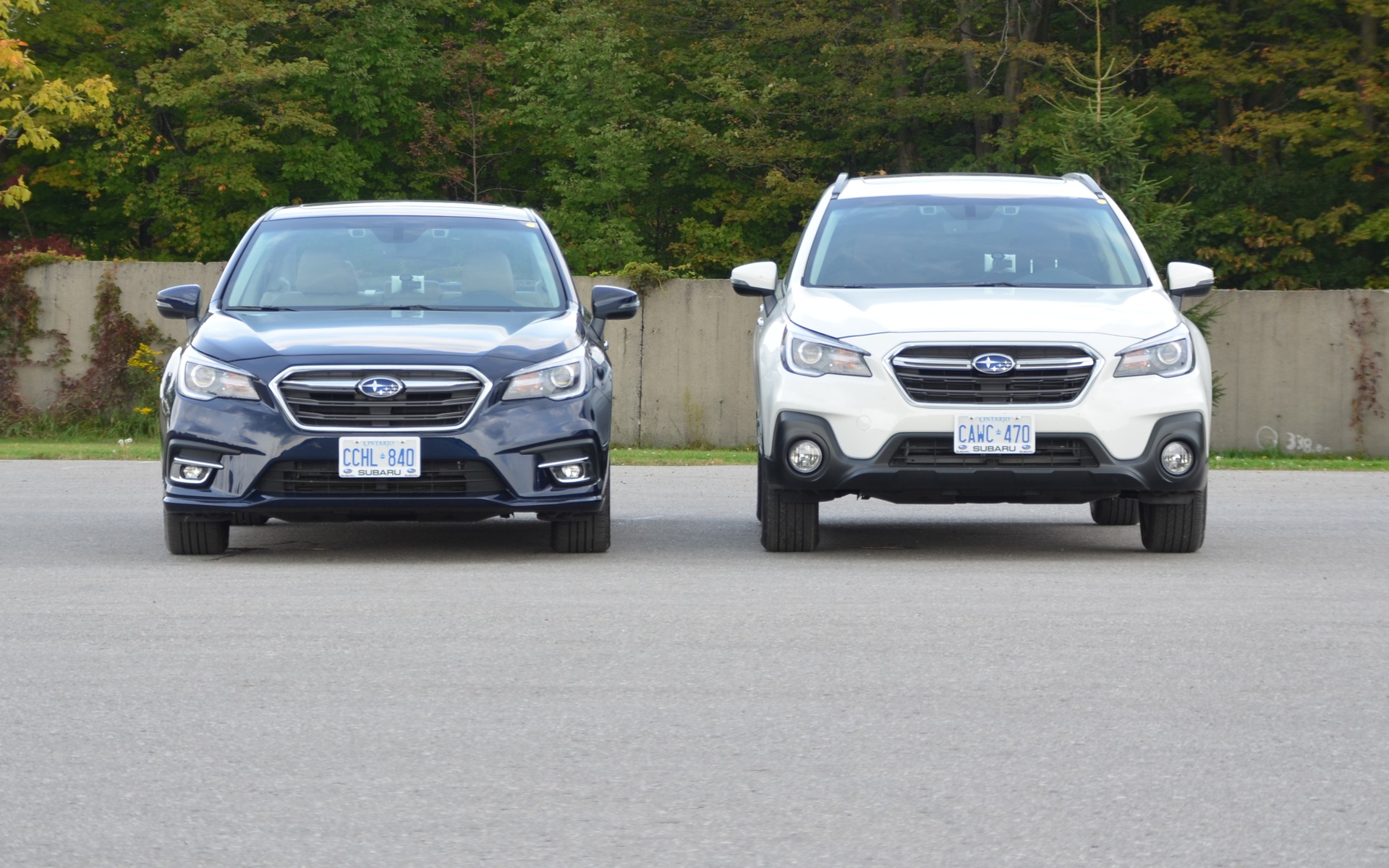2018 Subaru Legacy and Outback: Wired for the Future

| Strong points |
|
|---|---|
| Weak points |
|
In 2015, Subaru introduced the new version of the Legacy/Outback duo. Three years later, it’s time for an update. Nothing major, mind you, but still enough to score an invite to a presentation and a chance to drive these vehicles. With very few exceptions, the same changes were made to both cars.
Style and colours
From a styling standpoint, there are undoubtedly differences, but distinguishing a 2017 version from a 2018 is no easy task at first glance. The front grille has been subtly updated along with the front and rear bumpers. To reduce wind noise and improve aerodynamics, the rearview mirrors have also been restyled. Subaru says there are a few new colours but, in reality, they are different shades of the same colours that are already available. It's a safe bet that unless you put two cars side by side, no one will notice the difference between a Carbide Metallic Gray 2017 Legacy and a Magnetite Metallic Grey 2018 Legacy. I know I wouldn’t.

Updated dashboard
The most obvious modifications have been made to the dashboard, whose central section has been updated. The climate control commands are now housed in a module that also incorporates the central screen. The result is a less cluttered and more modern style. Kudos to Subaru for the execution; this job was not done on the cheap. The steering wheel design has changed somewhat, too, but the most significant change is completely invisible: the front windows are now soundproofed to reduce cabin noise.
Tech talk
Good news! USB jacks have been added to the rear-seat area. For the sake of modernization, Subaru is giving the 2018 Legacy and Outback Android Auto and Apple CarPlay integration on all versions.
The EyeSight system, which uses two cameras to scan the road, comes with four state-of-the-art technologies: adaptive cruise control, pre-collision braking, pre-collision throttle management—if the driver accelerates while there's an obstacle in the way, EyeSight will react by cutting power—as well as lane sway and lane departure warning. This system seems spot on and works very smoothly overall. Of course, there’s still no substitute for good judgment.
Improvements to the details
The engineers focused their efforts on what's under the hood. Note that for 2018, there's no manual gearbox for either the Legacy or the Outback. Last year, barely 3% of Legacy sales and 4% of Outback sales were for this type of gearbox. Maybe manual transmissions are on the way out after all.
All versions equipped with the 2.5-litre engine are PZEV-certified (Partial Zero Emission Vehicle). The engineers worked hard to reduce the engine’s vibrations and fuel consumption. The CVT gearbox that’s paired with the 2.5 has also been refined. In addition, Subaru improved the responsiveness and feedback from the brakes, steering and accelerator. The suspension, both in front and in back, has been revised to improve handling and comfort.
The 3.6-litre flat-six is still present and accounted for, and equips the higher-end versions. Its acceleration and pick-up are quite a bit more dynamic for sure, but most of the time, the 2.5 is all you need.

No unpleasant surprises
So what does all that translate to on the road? To be perfectly honest, so subtle are the changes that you’d have to drive a 2017 and a 2018 back-to-back to notice the difference.
However, it’s remarkably quiet and I felt that the steering provided more feedback than before. But if I hadn’t been told that Subaru had improved the steering, would I have noticed it? These two Subarus don’t offer a more exciting ride than before and I’d be surprised if those who didn’t like their style in the past will suddenly fall in love with the 2018 versions.
Fewer versions
Subaru has also considerably reduced the number of versions of the Legacy, from twelve to six. There are 10 versions of the more popular Outback. In 2016, in Canada, 3001 units of the Legacy were sold versus 11,255 units of the Outback. But hey, what can I say? SUVs are popular. The Outback, if it isn’t already obvious, is simply a high-riding Legacy to which Subaru has added a few distinctive style features.
Basically, the changes made to the 2018 edition are relevant and welcome. They will help Subaru offer modern, although not exactly trailblazing, Legacy and Outback until a new generation arrives in three or four years. In the meantime, both retain their intrinsic qualities: they are solid, well built, the 2.5-litre engine has moderate fuel consumption, and their symmetrical all-wheel drive is always appreciated.
Here are the suggested retail prices for 2018:
- Legacy 2.5i: $24,995
- Legacy 2.5i Touring: $28,295
- Legacy 2.5i Touring with optional EyeSight: $29,795
- Legacy 2.5i Sport with EyeSight: $31,695
- Legacy 2.5i Limited with EyeSight: $33,795
- Legacy 3.6R Limited with EyeSight: $36,795
- Outback 2.5i: $29,295
- Outback 2.5i Touring: $32,795
- Outback 2.5i Touring with optional EyeSight: $34,295
- Outback 2.5i Limited: $36,795
- Outback 2.5i Limited with optional EyeSight: $38,295
- Outback 2.5i Premier with EyeSight: $39,195 $
- Outback 3.6R Touring: $35,795
- Outback 3.6R Limited: $39,795
- Outback 3.6R Limited with optional EyeSight: $41,295
- Outback 3.6R Premier with EyeSight: $42,195











